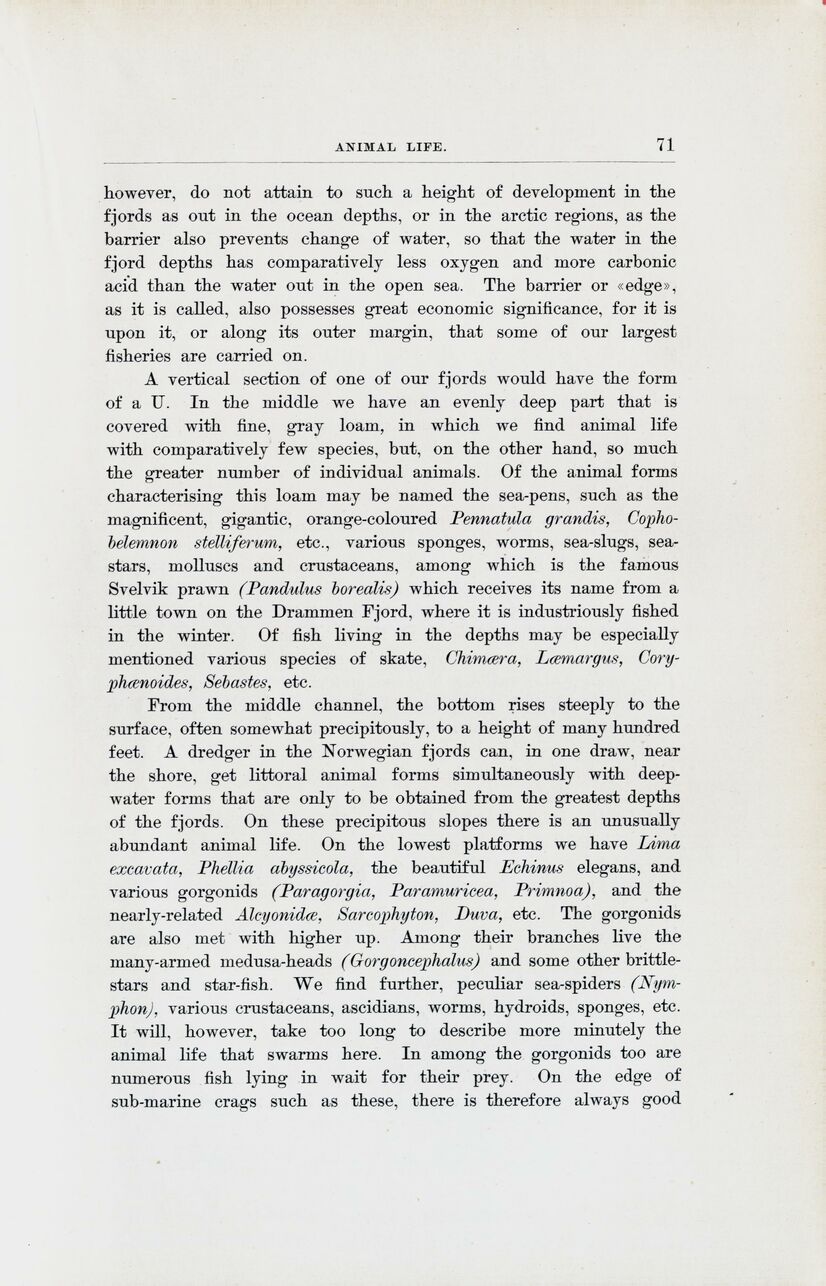
Full resolution (JPEG) - On this page / på denna sida - Animal Life, by James A. Grieg

<< prev. page << föreg. sida << >> nästa sida >> next page >>
Below is the raw OCR text
from the above scanned image.
Do you see an error? Proofread the page now!
Här nedan syns maskintolkade texten från faksimilbilden ovan.
Ser du något fel? Korrekturläs sidan nu!
This page has been proofread at least once.
(diff)
(history)
Denna sida har korrekturlästs minst en gång.
(skillnad)
(historik)
however, do not attain to such a height of development in the
fjords as out in the ocean depths, or in the arctic regions, as the
barrier also prevents change of water, so that the water in the
fjord depths lias comparatively less oxygen and more carbonic
acid than the water out in the open sea. The barrier or «edge»,
as it is called, also possesses great economic significance, for it is
upon it, or along its outer margin, that some of our largest
fisheries are carried on.
A vertical section of one of our fjords would have the form
of a U. In the middle we have an evenly deep part that is
covered with fine, gray loam, in which we find animal life
with comparatively few species, but, on the other hand, so much
the greater number of individual animals. Of the animal forms
characterising this loam may be named the sea-pens, such as the
magnificent, gigantic, orange-coloured Pennatula grandis,
Cophobelemnon stelliferum, etc., various sponges, worms, sea-slugs,
sea-stars, [[** sjk bindestrek]] molluscs and crustaceans, among which is the famous
Svelvik prawn (Pandulus borealis) which receives its name from a
little town on the Drammen Fjord, where it is industriously fished
in the winter. Of fish living in the depths may be especially
mentioned various species of skate, Chimæra, Læmargus,
Coryphænoides, Sebastes, etc.
From the middle channel, the bottom rises steeply to the
surface, often somewhat precipitously, to a height of many hundred
feet. A dredger in the Norwegian fjords can, in one draw, near
the shore, get littoral animal forms simultaneously with
deep-water [[** sjk bindestrek]] forms that are only to be obtained from the greatest depths
of the fjords. On these precipitous slopes there is an unusually
abundant animal life. On the lowest platforms we have Lima
excavata, Phellia abyssicola, the beautiful Echinus elegans, [[** sic, kursiv burde gått lenger?]] and
various gorgonids (Paragorgia, Paramuricea, Primnoa), and the
nearly-related Alcyonidæ, Sarcophyton, Duva, etc. The gorgonids
are also met with higher up. Among their branches live the
many-armed medusa-heads (Gorgoncephalus) and some other
brittle-stars and star-fish. We find further, peculiar sea-spiders
(Nymphon), various crustaceans, ascidians, worms, hydroids, sponges, etc.
It will, however, take too long to describe more minutely the
animal life that swarms here. In among the gorgonids too are
numerous fish lying in wait for their prey. On the edge of
sub-marine crags such as these, there is therefore always good
<< prev. page << föreg. sida << >> nästa sida >> next page >>